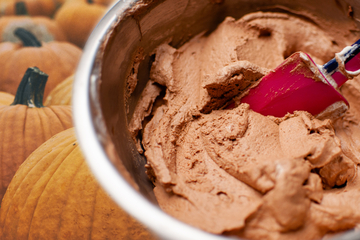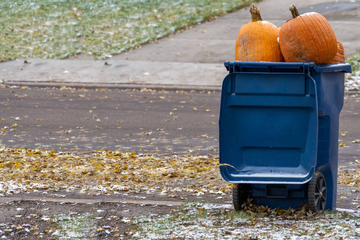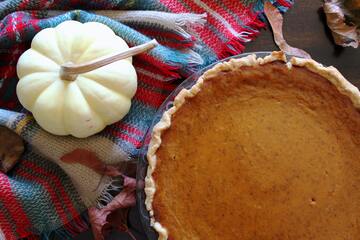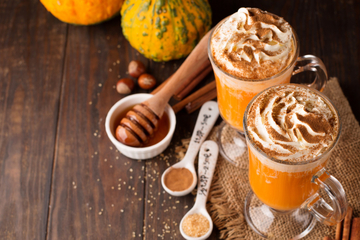National Pumpkin Day: How to pump up your pumpkin foods
In honor of National Pumpkin Day, we're here to help with how to pump up your favorite seasonal food.

October is Halloween month, and that means pumpkins are everywhere.
It's not only jack-o'-lanterns sitting on front steps and window sills: Supermarket shelves and restaurants menus are also stacked with the vibrant squash in various shapes and sizes.
There are several hundred edible varieties of pumpkin, but in the US, butternut squash and Hokkaido pumpkin may be the most common.
Pumpkin is an incredibly versatile vegetable and lends itself to many more dishes than just the ordinary - though very delicious - soup.
Most of us use pumpkin in just a handful of dishes, but this vegetable can go further than we give it credit for. Raw, pickled, fried, mashed, sweet and savory - basically anything goes with pumpkin.
Here are some of our favorite recipes, plus tips on how to best prepare different varieties of pumpkin food.
Are all parts of a pumpkin edible?
Pumpkins can be divided into three different categories: Those used for their tasty pulp, like Hokkaido, for example, those where only the seeds are used to extract the dark green pumpkin seed oil, and those used for decoration - when, due to bitter substances, they're not suitable for cooking.
The skin is usually only edible on summer squash. "Summer pumpkins, especially courgettes, are harvested before they're ripe and still have a soft skin," says Hans-Georg Levin from Germany's Agricultural Information Center. Therefore there's no need to peel the vast majority of summer squash.
Winter squash, on the other hand, is harvested later, when the pumpkin has reached its mature stage. At that point, the skin will have hardened into a tough rind which is no longer edible. That is, except for the all-time favorite Hokkaido: Despite being a winter squash, its skin remains soft enough for consumption.
Meanwhile, besides oil production, roasted pumpkin seeds also make for a great snack. Instead of buying them at the supermarket, try using those left over after you make your next batch of pumpkin soup or when carving out your pumpkin.
Pro Tip: When roasting them in a frying pan or baking them on a sheet in the oven, you can also add some spices.

Are the green spots on pumpkins safe to eat?
"Green spots in pumpkins are no problem," says nutrition specialist Daniela Krehl.
The same can't be said of tomatoes and potatoes, however. Any green spots on these, members of the genus of flowering plants called Solanum, contain the poisonous compound solanine. Ingesting this can cause symptoms such as nausea, headaches, vomiting, diarrhea, abdominal pain, and neurological problems. In very severe cases, even death can result.
Green spots at the base of a pumpkin's stem or in the pulp are merely a sign that it's not fully ripe.
How to properly cut a pumpkin
Many varieties, like Hokkaido, are quite rigid when raw, which makes chopping a little difficult.
Ute Ligges, who runs a pumpkin farm, has a tip: "Put it in the oven and pre-cook it a bit, that makes it soft and easier to cut." Ten minutes at 350 degrees Fahrenheit is often enough.
Next, place the pumpkin on a wooden board and cut it with a large, sharp knife.
If you don't like the skin, you can now remove it - with some varieties that's very easy. Butternut has a very soft skin, so you can use a potato or asparagus peeler. It's best to cut it into manageable pieces beforehand.
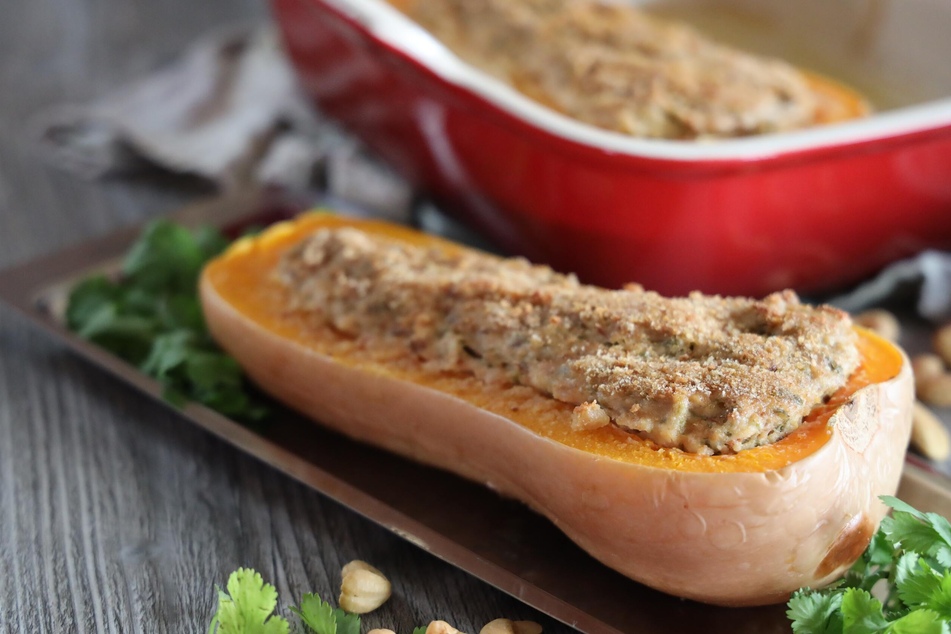
Which spices are best to season pumpkin?
Most pumpkins' original taste is rather subtle, so adding a good portion of condiments therefore helps to spice things up a little. And don't go too easy on your squash: pumpkins can take stronger spices and the hot stuff.
For a spicy dish, try adding ginger, chili, curry powder, garlic, paprika, onion, nutmeg, or balsamic vinegar, for example, or a combination of some of the above.
If you're preparing sweet pumpkin - and if you haven't tried it, you should! - season with honey, cinnamon, or fruit juices. Or add whole pieces of pineapple, apples, or oranges, for example.
What is the difference between pumpkin and spaghetti squash?
Why is the spaghetti squash called spaghetti squash? Because it has stringy pulp, which lends itself perfectly to making no-wheat "pasta", according to Ligges.
It ha a much different consistency than baked pumpkin does.
For a simple spaghetti squash recipe, cut the squash in two halves and remove the seeds. Rub the inside with a little olive oil and fill with tomato or Bolognese sauce.
Cover with plenty of grated Parmesan cheese, then put the two halves on a greased baking tray and support them using some tinfoil. Bake at 400 degrees for about 45 minutes.
By the way, you can also basically prepare all pumpkin varieties using your microwave, especially Puccini, Rolet, Baby Boo, Delicata and Ivory, says Ligges.
Cut of the top and remove the seeds. Rub the pumpkin with some oil and put in the microwave for 10 minutes. "Fill it with shrimp cocktail or sour cream afterwards," and you'll have a great dish, according to Ligges.
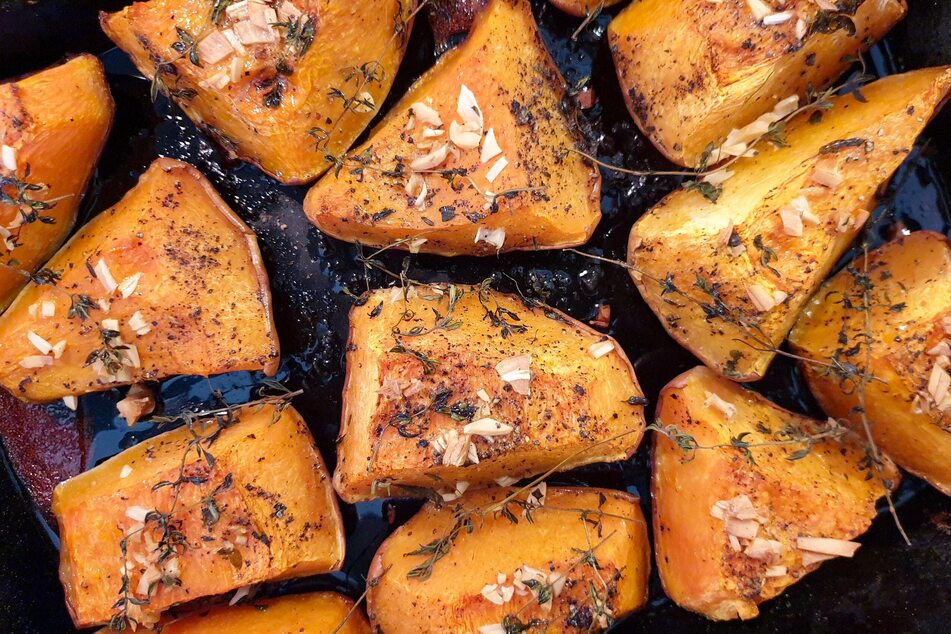
Savory pumpkin recipes: Pumpkin fries and sliced pumpkin
If you want to try fried pumpkin, butternut is best. Cut it into thin slices and fry it in a pan or on the grill. Putting it on top of lettuce makes for a great side dish, topped with walnuts, goat cheese, and a vinegar dressing.
Ute Ligges has a simple recipe for oven pumpkin. You'll need two pumpkins, for example Puccinis or Rolet, 2 tbsp of butter, salt, and herbs – like thyme for example.
Halve the pumpkins and remove the seeds with a spoon. Fill with the butter and bake in the oven at 320 degrees for about 25 minutes. Season with salt and herbs before serving.
Another option is to cut the vegetables into wedges and bake at 400 degrees for about 20 minutes to make pumpkin fries. Season with salt and pepper after they're crispy.
For some sweeter pumpkin recipes, check out how to whip up your own pumpkin mousse, a pumpkin spice latte, and pumpkin-flavored coffee drinks at home.
Cover photo: Unsplash/Jessica Delp

